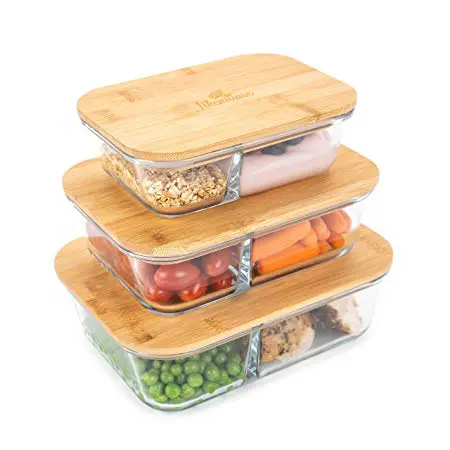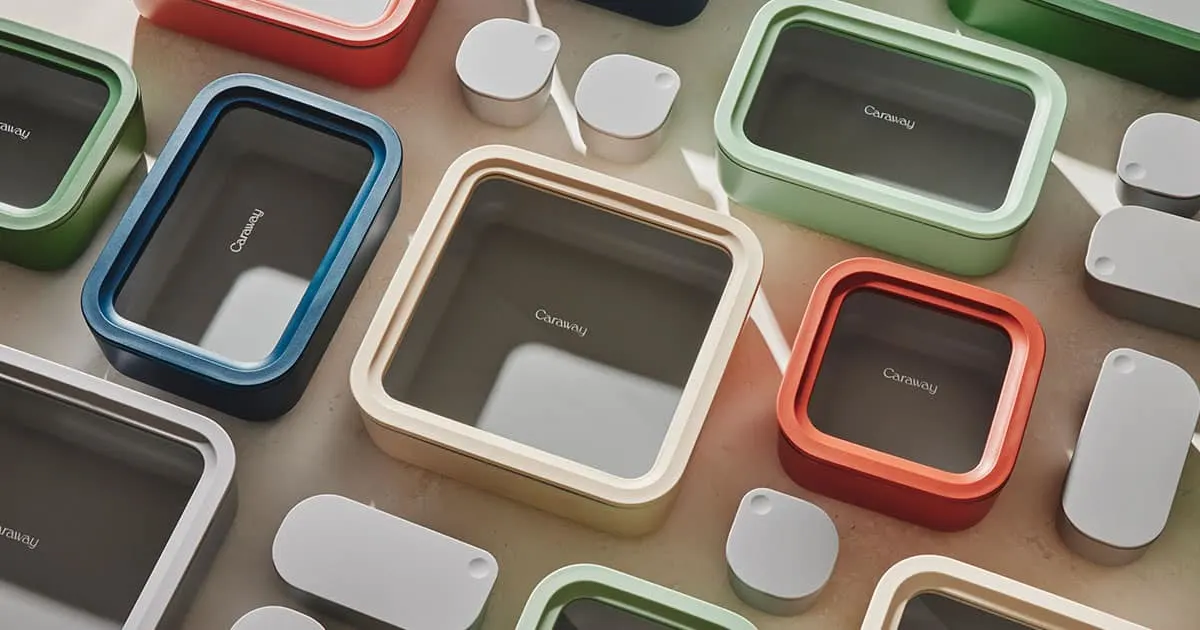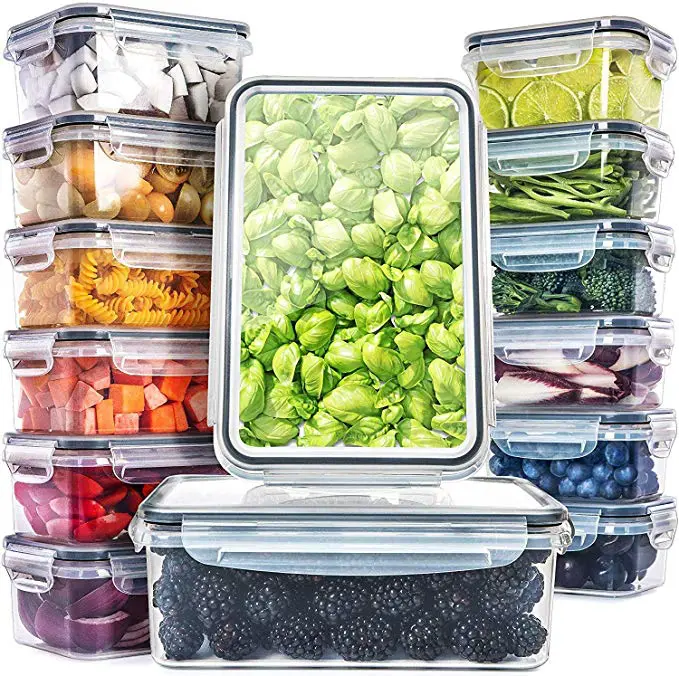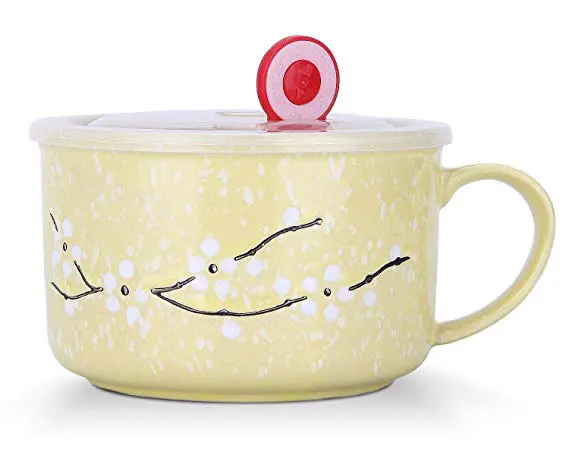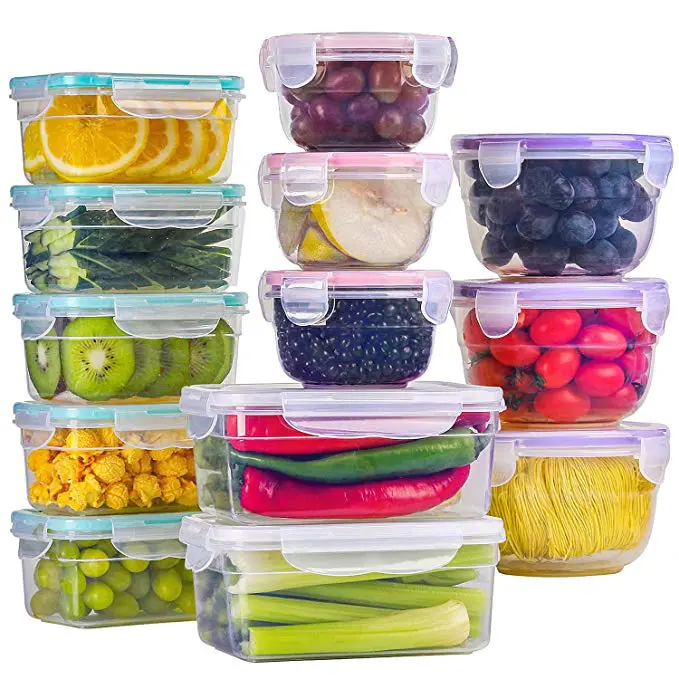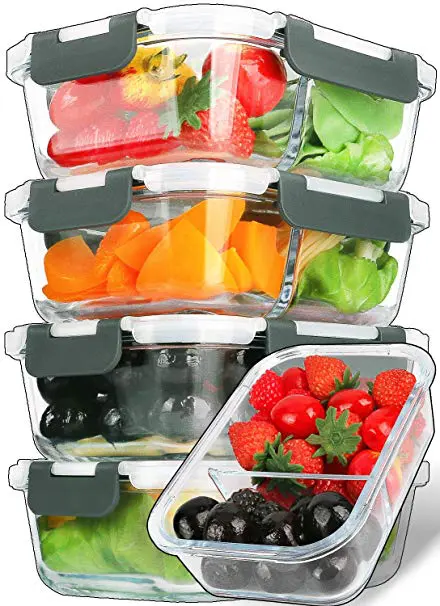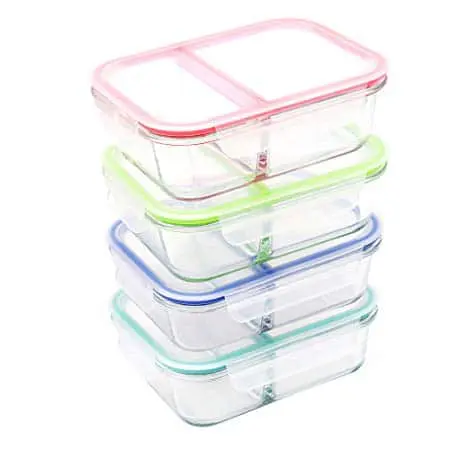Lid, material, size and shape are all factors used to determine which microwave safe containers to purchase. So how do you decide which microwaveable containers are best for meal prep, storage and reheating food?
Well, there are a few key factors to consider when selecting microwavable containers for food. Aside from the being microwave safe, here are some important factors to think about:
- Size: Portion control is a primary necessity in meal prep. The size needs to be adequate to nourish your needs, but not be too abundant that you end up overeating. However, sometimes its necessary to have a range of sizes to accommodate various meal prep essentials.
- Material: Glass does not stain, absorb odors or harbor flavors. Therefore, it seems to be the best material choice in this situation. In hindsight, plastic lids don’t rust and plastic containers don’t shatter.
- Lid: The lid must be food grade, rust-free and also needs to lock in place. Snap-on lids with airtight locking are also a benefit. Plastic lids are rust-free and are fairly durable over time.
- Shape: Round, square or rectangular are determined by your storage space and personal preference. However, dual compartment separation is nice to keep meal prep items divided while still remaining in the same microwave safe container.

How do you know if a container is microwave safe?
In general, glass and ceramic containers are microwave safe unless otherwise noted by the manufacturer. Some specific plastic materials have been tested by the FDA and are also declared microwave safe.
Microwave safe is usually written or the microwave safe symbol (a microwave with wavy lines) is used on the bottom of a container.
It’s best to follow manufacturer recommendations when considering whether or not a container is microwave safe. If the container is plastic, then there will also be a number on the bottom associated with the type plastic compound used.
Is it safe to use plastic containers in the microwave? Plastic takeout containers, water bottles and condiment tubs or jars are usually not microwave-safe. Damaged, scratched or old containers that have been microwaved many times may also leach out chemical compounds into food or water.
Stick to manufacturer recommendations and only use containers that are labels microwave safe. However, sometimes numbers describe the chemical compound used to make the container.
When using a plastic container, check the bottom to see what type of material is used.
- 3, 6, 7 are not microwave safe
- 1, 2, 4 are sometimes microwave safe.
- 5 is polypropylene, PP, and is generally considered safe to use in the microwave.
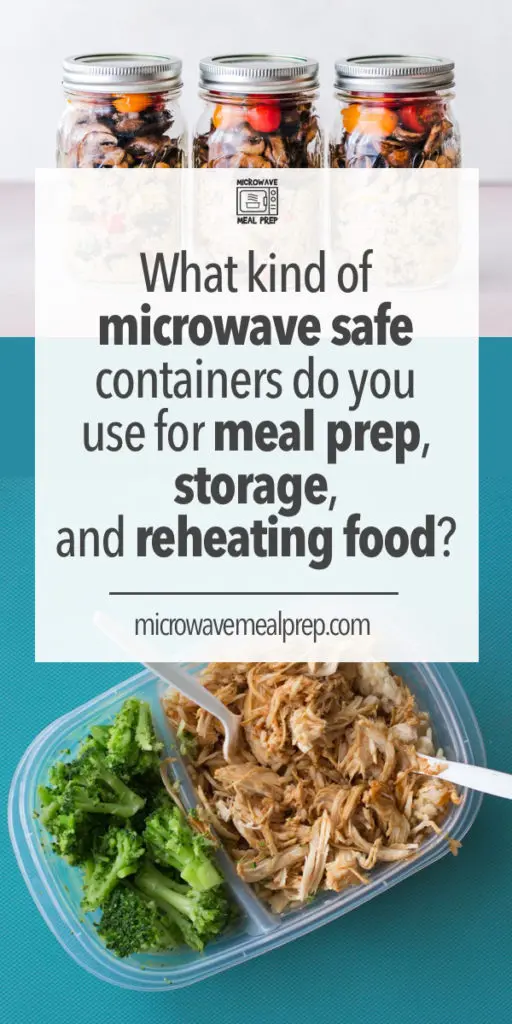
What container is best for microwave?
Glass containers are best to use in the microwave. Glass does not stain or retain odors. Furthermore, it won’t leach out potentially hazardous chemicals into your food or water. Ceramic containers also work well for similar reasoning, they do not stain and odors do not permeate into the surface.
Avoid plastics that are not labeled as microwave safe, and also do not heat Styrofoam in the microwave. Here are the best microwave safe containers that you can safely use for meal prep, storage and reheating food in the microwave.
Be sure to check out How to Meal Prep Salads too!
Best Microwave Containers
Microwave safe containers that make it easy to cook and reheat food in the microwave. Glass, plastic and ceramic containers that are safe for microwave use to help making cooking, cleaning and meal prep faster and more convenient.
Likenware 3-Pack Glass Food Storage Containers 2 Compartment with Bamboo Lids
Bamboo, glass and 2 compartment design makes this the ultimate microwave safe container. When you consider both meal prep and portion control, the dual compartments really come in handy.
Furthermore, this 3-pack comes with different size containers. The sizes are convenient and allow for plenty of room to store food prep.
The designs are attractive and feature a minimalist bamboo lid that can also be used as a cutting board. Dishwasher, freezer and oven safe, you can’t really go wrong with this selection.
Pros:
Glass containers with 2 compartment design
Bamboo lid instead of plastic
Beautiful minimalist design attractive
3 useful sizes
Cons:
Lid is not snap on
These non-toxic ceramic-coated glass containers are easy-to-store and super sleek in any modern home. They work great and look amazing when displayed in your kitchen.
Pros:
Glass containers with ceramic coating
No plastic
Durable construction that is made to last
Elegant design
Beautiful color options
Cons:
Lid snaps on very tightly and is difficult to get off
Very expensive
These food storage containers with lids are an affordable option that comes in either a 9 or 14 piece set. The lids have a leak proof locking system that is both airtight and watertight.
They are BPA-fee and come in 3 different sizes to make storage even more convenient. The containers are FDA approved and will not leach toxins into your food.
Pros:
BPA-free plastic containers and lids
14-pack includes 3 different sizes
Leak proof 4-hinge lid
Cons:
Plastic
The ceramic containers with lid are microwave safe and made with top quality eco friendly material. Ceramic is non-toxic, which makes it a great option for microwaving food or liquids.
The outside of the container has an exquisite design showcasing hand painted workmanship. Furthermore, the handle is anti-scald which makes it convenient for hold when your food is extremely hot.
Pros:
Top quality ceramic
Steam release lid
Hand painted design
Cons:
Price
Silicone lid
Prep Naturals Glass Food Storage Containers with Lids [24 Ounce, 20Pcs]
Glass food storage containers with lids are the best choice as a much healthier alternative to plastic. Cook for ahead of time and easily reheat at anytime for a meal on the go.
The 20-piece set includes 10 (24oz) glass containers and matching lids. They make meal prep, storage and reheating easy to do.
Pros:
10-pack glass meal prep containers
Locking lids with leak proof hinges.
Cons:
Price
Plastic lids
Another great option to consider when searching for BPA-free plastic food containers with lids. The containers are also dishwasher and freezer safe.
There are 3 different sizes included in the 13-piece set. The leak-proof snap locking lids make sure your food items stay in place and don’t spill all over the place.
Pros:
13-pack includes different size and shape containers
Affordable price
Leak proof lid design
Cons:
Plastic
Store your food in glass meal prep containers with 2 compartments. The divider keeps items separate so that you can enjoy individually.
The glass containers come with snap locking lids that are leak proof and airtight. They are the perfect size to hold a well portioned meal and are also FDA certified as food grade safe.
This is my favorite design because the dual compartments allow food to remain separated. Serve up two completely separate dishes in the same microwave safe meal prep container.
Pros:
High quality glass
3 compartment portion control design
Snap locking lids
Cons:
Plastic lids
These glass meal prep containers are microwave, freezer and oven safe. Not only are they perfect for storing food, but also make reheating a breeze.
The different color lids with clear glass design also make it simple to distinguish the contents of the food. Great for meal prep because the dividers keep all the food separate.
The 4-pack of containers are spacious and hold 36 fl. oz. The strong seals had locking hinges that keep the lids airtight and in place. Premium materials that are easy to carry and maintain.
Pros:
Large glass meal prep containers
2 compartment dividers
4 different color lids make meal prep distinguishable
Spill proof locking lids
Cons:
Plastic lids

